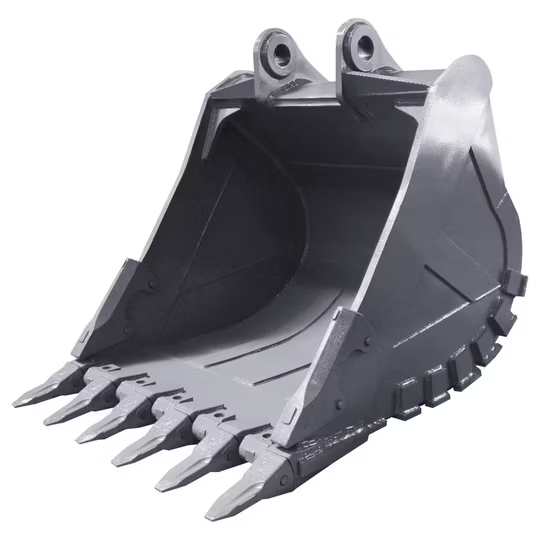When it comes to heavy machinery attachments like the rock bucket, choosing between Original Equipment Manufacturer (OEM) parts and aftermarket alternatives can significantly impact your return on investment (ROI). Both options have their strengths and weaknesses, but the key is understanding which one aligns better with your operational needs, budget, and long-term goals.
In this blog, we’ll break down the differences between OEM and aftermarket rock buckets and help you determine which offers the best ROI for your business.
An OEM rock bucket is designed and manufactured by the same company that built your machine. It is made to the exact specifications and quality standards set by the equipment manufacturer.
Advantages of OEM Rock Buckets:
Perfect fit and compatibility with your machine
High-quality materials and consistent manufacturing
Backed by the OEM warranty and support
Aftermarket rock buckets are manufactured by third-party companies not affiliated with the original equipment manufacturer. These can range from budget-friendly options to high-performance products designed to compete with OEM quality.
Advantages of Aftermarket Rock Buckets:
Lower upfront cost
More variety and customization options
Availability from multiple suppliers
It’s no secret that OEM rock buckets come with a premium price tag. This higher cost is often justified by their guaranteed compatibility and quality.
Aftermarket rock buckets, on the other hand, are generally more affordable. This can be especially attractive for contractors or operators managing multiple machines or working on short-term projects.
✅ Winner for Initial Cost: Aftermarket
A rock bucket endures extreme stress during operations like excavation, demolition, and handling abrasive materials. OEM rock buckets are rigorously tested and built with high-grade steel to match these challenges.
While many aftermarket manufacturers produce durable rock buckets, quality can vary widely between brands. Some premium aftermarket options rival OEM products, but low-cost versions may wear out faster, leading to frequent replacements.
✅ Winner for Durability: OEM (but high-quality aftermarket options can compete)
OEM rock buckets may require longer lead times, especially for specialized models. If a replacement is urgent, this delay can cost you valuable uptime.
Aftermarket suppliers often have a larger inventory and can deliver faster, minimizing downtime. Some even offer custom modifications to suit specific site requirements.
✅ Winner for Availability: Aftermarket
OEM parts come with comprehensive warranties and service support from authorized dealers. This can give peace of mind, especially for high-investment equipment.
Aftermarket warranties vary by manufacturer. Reputable aftermarket brands offer solid support, but others may lack the same level of after-sales service.
✅ Winner for Warranty: OEM
The answer depends on your operation:
For high-utilization machines in demanding environments, OEM rock buckets may deliver better ROI thanks to their durability, warranty coverage, and long-term performance.
For smaller contractors, budget-conscious projects, or older machines, aftermarket rock buckets can provide excellent ROI if you choose a trusted supplier. The lower initial investment and quick availability often outweigh potential risks.
Regardless of whether you go OEM or aftermarket, working with a reputable supplier is critical. Look for:
✔️ Proven track record in manufacturing rock buckets
✔️ Use of high-grade steel and advanced fabrication techniques
✔️ Options for customization to meet your specific needs
✔️ Strong customer support and warranty policies
Remember, the cheapest option isn’t always the most cost-effective. Evaluate the total lifecycle cost, including maintenance, downtime, and replacement frequency, to make the right decision.
Your choice between OEM and aftermarket rock buckets ultimately comes down to balancing quality, cost, and operational requirements. For businesses that rely on heavy-duty performance and can’t afford downtime, OEM is often the safer bet. For those seeking flexibility and cost savings without compromising too much on quality, a high-quality aftermarket rock bucket can be the smarter investment.
Whichever you choose, always prioritize durability and compatibility to maximize ROI.